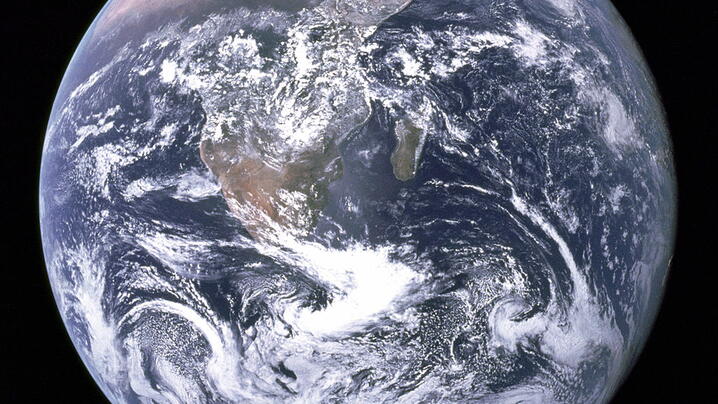
“We travel together, passengers on a little spaceship, dependent on its vulnerable reserves of air and soil; all committed for our safety to its security and peace; preserved from annihilation only by the care, the work, and, I will say, the love we give our fragile craft . . .”
Adlai Stevenson, U.S. Ambassador to the United Nations, 1965
Fifty years ago, the environmental policies of the United States were in their infancy. The foundation of environmental protection as a legal and regulatory framework had yet to be built. The U.S. Environmental Protection Agency (EPA) did not exist; the Clean Water Act and Clean Air Act were toddlers, far from their mature form today. Without conscientious, long-term planning at the forefront of decision making, exploitation of land, water, and air by industry (and others) scarred the American landscape for most of the 20th century.
Fortunately for future generations (mine included), tens of millions of Americans chose to change the conversation and alter the course of U.S. environmental policy.
In 1970, on April 22nd, the first Earth Day was celebrated across the country – an estimated 20 million took part in the largest demonstration ever in American history. It was a pivotal moment in an environmental movement that had been gradually building like sediment behind a dam. The issue burst onto the political scene, and sweeping environmental policies to address the issue of environmental degradation took root. Notable milestones included the creation of EPA, on July 9, 1970, responsible for environmental legislation, ecological initiatives, and research; later that year in October, the National Oceanographic and Atmospheric Administration (NOAA) to conserve marine ecosystems and monitor ocean conditions was created. For decades, a wave of legislation that strengthened environmental protections elevated the connection and renewed the relationship between people and planet.
The story doesn’t end there. Today, the remnants of industrial use are everywhere and the revitalization of these places is a critical element of the next chapter in environmental stewardship.
Former industrial sites often qualify as brownfields: the real property, the expansion, redevelopment, or reuse of which may be complicated by the presence or potential presence of a hazardous substance, pollutant, or contaminant. According to the Government Accountability Office (GAO), estimates show there are over 400,000 brownfields in the United States that total nearly 5 million acres (enough to cover the 60 largest cities in the America) of abandoned industrial areas. The odds are there is at least one brownfield in your community or nearby.
Brownfields revitalization offers opportunities to implement sustainable redevelopment practices and play an important role in economic development. The health and happiness of communities depend on vibrant places that start with the ground underneath our feet. The National Brownfields Training Conference in Chicago, Illinois on September 2-4, 2015 will bring together thousands of experts and practitioners from government, academia, and the private sector to share environmental revitalization and economic redevelopment strategies. Attendees will leave Brownfields 2015 with the tools and contacts needed to help make their community a stronger, more environmentally and economically vibrant place.
So tomorrow, on the 45th anniversary of Earth Day, consider what part you can play in improving the environment in your community. Remember: The movement is not over – there is work to be done. Will you do your part to make Spaceship Earth a healthier, happier place?
New, Reduced Membership Dues
A new, reduced dues rate is available for CAOs/ACAOs, along with additional discounts for those in smaller communities, has been implemented. Learn more and be sure to join or renew today!
